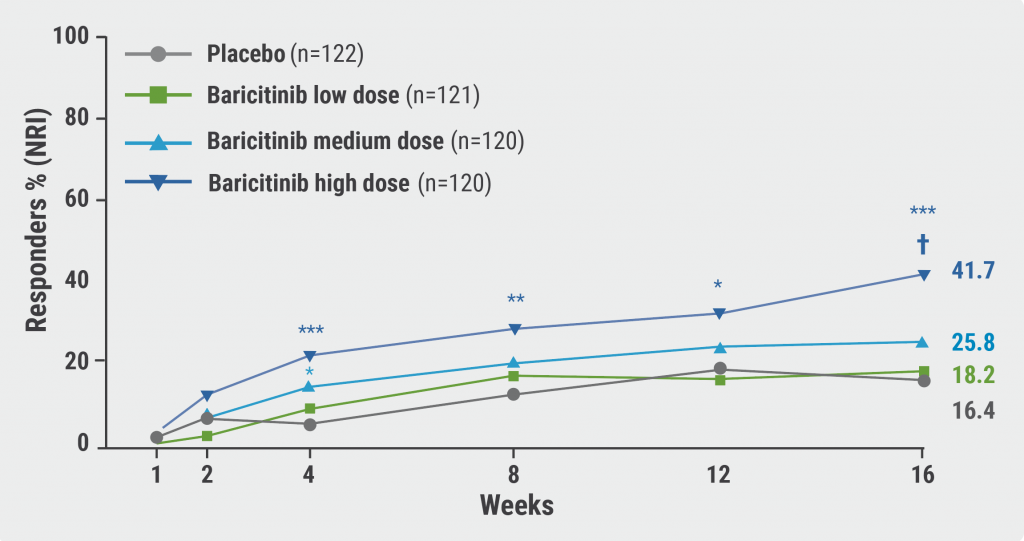Eczema affects up to 20% of the paediatric population and the number of diagnoses continues to rise [1]. Of children with eczema, 60% are predisposed to develop 1 or more atopic comorbidities, such as asthma, allergic rhinitis, or food allergies. Therefore, effective preventive strategies are urgently needed. “When we are born, we experience the most violent environmental change that we will ever experience in our life,” Prof. Alan Irvine (Trinity College Dublin, Ireland) stated, referring to the environmental difference pre- and post-birth [2]. Positive results of early studies in 2014 encouraged the Irish researchers to set up the single centre, investigator-blinded STOP AD study (NCT03871998) that tested short-term emollient use for its capacity to prevent AD.
The 321, randomised, high-risk infants with a family history of AD were included from birth to 4 days old. The intervention arm of the study immediately started an 8-week course with a ceramide dominant emollient at a dose of about 7 fingertip units applied twice daily. The control-arm infants received standard skin care. During baseline and control visits at 2, 4, and 8 weeks, skin swabs, measuring of transepidermal water loss (TEWL), natural moisturising factor (NMF), and filaggrin testing were performed. The primary endpoint was the cumulative incidence of AD at 12 months. Secondary endpoints included AD presence at 6 months and the development of NMF and TEWL. Results have been published in Allergy [3].
The mean infant age at baseline was just under 2 days and over 80% carried the wildtype filaggrin gene. Adherence in the intervention group was high, with around 90% receiving daily emollient application at weeks 2, 4, and 8. “People were very motivated, they knew what they were trying to prevent disease development,” Prof. Irvine commented. The use of emollients in the control group was low.
Reductions in AD risk were significant at 6 and 12 months with an RR of 0.524 (P=0.004) and 0.503 (P=0.002), respectively. Looking at cumulative AD at 12 months, Prof. Irvine highlighted that the biggest difference was noticed in the kids that had AD at 6 and at 12 months, while the intervention had already stopped at 8 weeks. Infants with a loss of function mutation in FLG were more prone to AD than the control group. “If we look at the intervention group and stratify by filaggrin mutation status, there is no additional risk of getting AD,” Prof. Irvine stressed and continued, “so, what we are seeing clearly here is a treatment-genotype-interaction.” The researchers concluded that this significantly reduced AD incidence suggests short-term emollient application as a viable therapeutic model for risk reduction of AD in infancy.
In contrast to this finding, 2 large recent trials found no evidence of a protective effect of emollient use in the first year against AD [4,5]. The authors emphasised that the most notable difference between these randomised-controlled trials and the current one was the timing of the intervention. The treatment in STOP AD began within days of birth during a dynamic period of skin maturation, which might explain the positive effect [3].
- Kowalska-Oledzka E, et al. J Drug Assess 2019;8:126‒8.
- Irvine AD, et al. Early initiation of short-term emollient use for the prevention of atopic dermatitis in high-risk infants – the STOP AD randomised controlled trial. 09, EADV Congress 2022, Milan, Italy, 7–10 September.
- Chaoimh CN, et al. Allergy. 23 Aug 2022. Doi: 10.1111/all.15491.
- Chalmers JR, et al. Lancet. 2020;395:962‒972.
- Skjerven HO, et al. Lancet. 2020;395:951‒961.
Copyright ©2022 Medicom Medical Publishers
Posted on



